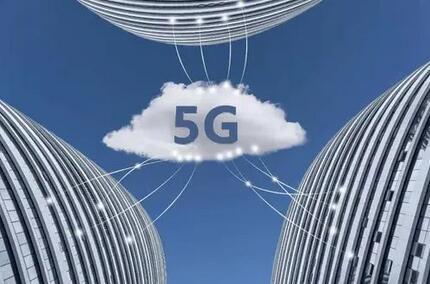Academician of the Chinese Academy of Engineering: 5G will consume 2.1% of the national electricity consumption in 2026

Recently, the three major operators have announced
"dual carbon" goals. Wei Jinwu, vice president of the China Unicom
Research Institute, said that the current 5G base station energy consumption is
3-4 times that of 4G base stations, and the density of mid-to-high frequency
bands is greater than 4G, and China is currently implementing a 5G network
based on all-SA independent networking. Therefore, 5G is still in a state of
high energy consumption at this stage.
On the afternoon of September 1, at the World 5G Conference
"5G and Carbon Neutrality and Carbon Peak Forum", Wu Feng, an
academician of the Chinese Academy of Engineering, predicted that after all
three major operators upgrade 5G in 2026, power consumption will reach the
total power consumption of the country 2.1% of the volume, a higher density,
low cost and highly reliable energy storage technology is required to ensure
stable operation.

Recently, the three major operators have announced
"dual carbon" goals. Wei Jinwu, vice president of the China Unicom
Research Institute, said that the current 5G base station energy consumption is
3-4 times that of 4G base stations, and the density of mid-to-high frequency
bands is greater than 4G, and China is currently implementing a 5G network
based on all-SA independent networking. Therefore, 5G is still in a state of
high energy consumption at this stage. And Huang Yuhong, deputy dean of China
Mobile Research Institute, pointed out at the forum that compared to before
commercialization in 2019, the current 5G base station power consumption has
been reduced by 1/4, and the "four new + two modernization" measures
can be taken in the future to further reduce the energy consumption of 5G base
stations.
At the above forum, Wu Feng, an academician of the Chinese
Academy of Engineering, pointed out that in 2020, my country’s annual power
generation will be 7.42 trillion kWh and electricity consumption will be 7.51
trillion kWh. He predicts that after all three major operators upgrade 5G in
2026, the electricity The consumption will reach 2.1% of the country's total
electricity consumption, which is higher than the electricity consumption level
of the data center.
He believes that the construction of 5G base stations
requires higher-density, low-cost, and highly reliable energy storage
technology. On the one hand, it can ensure the stable operation of the base
station, and on the other hand, it can ensure the balance of power and the
safety of power operation.
It is worth noting that recently, the three major domestic
operators have successively released their "dual carbon" goals and
action plans.
China Telecom's "1236" Action Plan proposes that
during the "14th Five-Year Plan" period, the total energy consumption/carbon
emissions per unit of telecommunications business will be reduced by more than
23%; 4/5G co-construction and sharing will save more than 45 billion kWh of
electricity, and build a new 5G The power saving ratio of base stations is not
less than 20%; large-scale and super-large green data centers account for more
than 80%, and the PUE of newly-built data centers is less than 1.3.
China Unicom’s "3+5+1+1" Dual Carbon Action Plan
proposes to strive to reach the peak in total energy consumption growth by
2023. With the peak of the power generation industry and the progress of green
power trading, we will strive to achieve total carbon emissions by 2028. The
amount reaches its peak in advance.
The "C² Three Energy-China Mobile Carbon Peak Carbon
Neutralization Action Plan White Paper" released by China Mobile proposes
that in 2025, when the company's total telecom business increases by 1.6 times,
the total carbon emissions will be controlled within 56 million tons. Target.
Huang Yuhong, deputy dean of China Mobile Research
Institute, pointed out at the forum that compared to before commercialization
in 2019, the power consumption of 5G base stations has been reduced by 1/4, and
the power consumption efficiency per bit has improved significantly, but further
measures are still needed to reduce energy consumption.
In his view, the low-carbon process of 5G base stations can
take the "four new + two modernization" measures.
The first "new" is the new architecture, which
further optimizes the architecture of high-energy-consuming base stations,
reduces active parts, increases passive parts, is suitable for different
scenarios, and explores various forms of base stations. For example, as macro
stations, most of them are 64-channel and 32-channel large-scale antennas, but
for some other scenarios, 2-channel and 4-channel methods can be used to reduce
power consumption.
In addition, in the network architecture, a centralized
deployment method can be used to reduce the requirements on the computer room,
thereby reducing the power consumption of the computer room's supporting power
supply and air conditioning.
The second is new functions. More intelligent modules such
as deep sleep should be promoted. In the design of transmitting signals, it is
not always necessary to transmit signals. The power consumption must be
adjusted according to the business load. When it is not high, it is not
necessary to work at full load.
The third is new materials, gallium nitride is already in
use, and graphene materials are expected to be used for heat dissipation in the
future.
The fourth is new energy. At present, most of the energy for
5G base stations is coal power. In the future, more base stations will use
clean energy such as wind and solar.
In terms of "two modernizations", the first one is
intelligence. 5G base stations should introduce artificial intelligence
technology to make the network run more intelligently and better match the
needs of the business. It is necessary to design flexible switches and modules
to improve network effects and reduce power consumption. The second is
coordination, which coordinates the terminals, base stations, networks and
other equipment to further reduce energy consumption.
Wei Jinwu, vice president of the China Unicom Research
Institute, said at the forum that the first stage of 5G large-scale
construction has been completed, and the second stage of the same level of
construction will be carried out in the future, which will continue to increase
energy consumption.
"In the next stage, the proportion of the digital
economy is increasing year by year. Operators need to consolidate the digital
base of the entire digital economy. To undertake this mission, the energy
consumption of operators cannot be too low."
He pointed out that the current energy consumption of 5G
base stations is 3-4 times that of 4G base stations. The density of mid-to-high
frequency bands is higher than that of 4G. Moreover, China is currently
implementing a 5G network based on all-SA independent networking. Therefore, 5G
is still in high energy consumption at this stage. The state of being able.
Wei Jinwu pointed out that the low-carbonization of the
communications industry depends on the clean energy transmission of the energy
industry and the further optimization of network deployment. In terms of
reducing emissions, model innovation may bring greater benefits than
technological progress. In the future, 5G needs to simplify the overall network
architecture, enhance the transmission power of information bits per unit of
energy consumption, realize the synergy of 5G, 4G, and wired, and also deepen
the co-construction and sharing of operators and the energy industry.